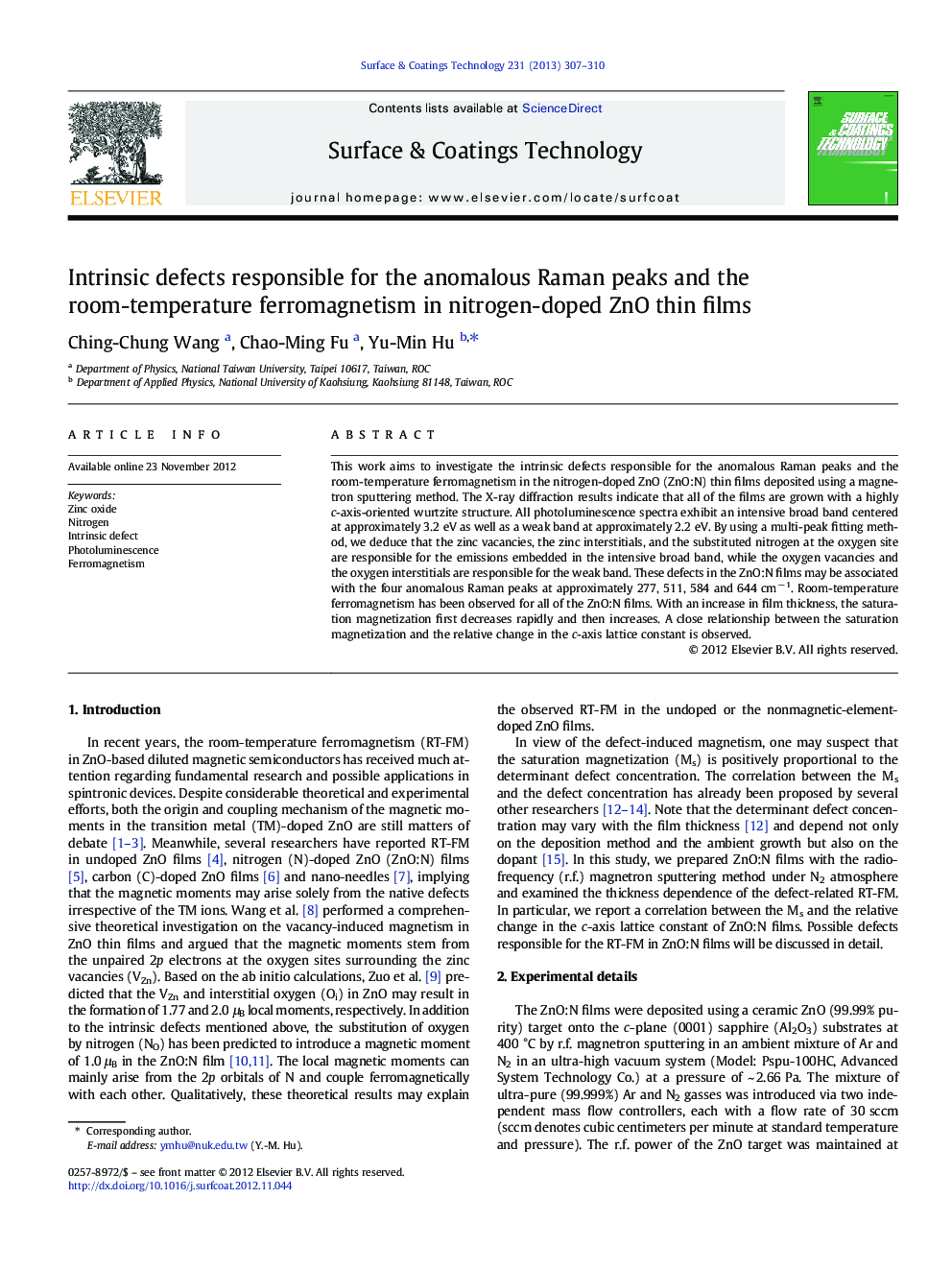| Article ID | Journal | Published Year | Pages | File Type |
|---|---|---|---|---|
| 1657746 | Surface and Coatings Technology | 2013 | 4 Pages |
This work aims to investigate the intrinsic defects responsible for the anomalous Raman peaks and the room-temperature ferromagnetism in the nitrogen-doped ZnO (ZnO:N) thin films deposited using a magnetron sputtering method. The X-ray diffraction results indicate that all of the films are grown with a highly c-axis-oriented wurtzite structure. All photoluminescence spectra exhibit an intensive broad band centered at approximately 3.2 eV as well as a weak band at approximately 2.2 eV. By using a multi-peak fitting method, we deduce that the zinc vacancies, the zinc interstitials, and the substituted nitrogen at the oxygen site are responsible for the emissions embedded in the intensive broad band, while the oxygen vacancies and the oxygen interstitials are responsible for the weak band. These defects in the ZnO:N films may be associated with the four anomalous Raman peaks at approximately 277, 511, 584 and 644 cm− 1. Room-temperature ferromagnetism has been observed for all of the ZnO:N films. With an increase in film thickness, the saturation magnetization first decreases rapidly and then increases. A close relationship between the saturation magnetization and the relative change in the c-axis lattice constant is observed.
► We investigated the thickness dependence of ferromagnetism in ZnO:N films. ► Four anomalous Raman peaks at 277, 511, 584 and 644 cm− 1 are present in the films. ► The ferromagnetism in ZnO:N films is attributed to VZn, Oi and NO defects. ► The saturation magnetization is correlated with the c-axis lattice constant.
